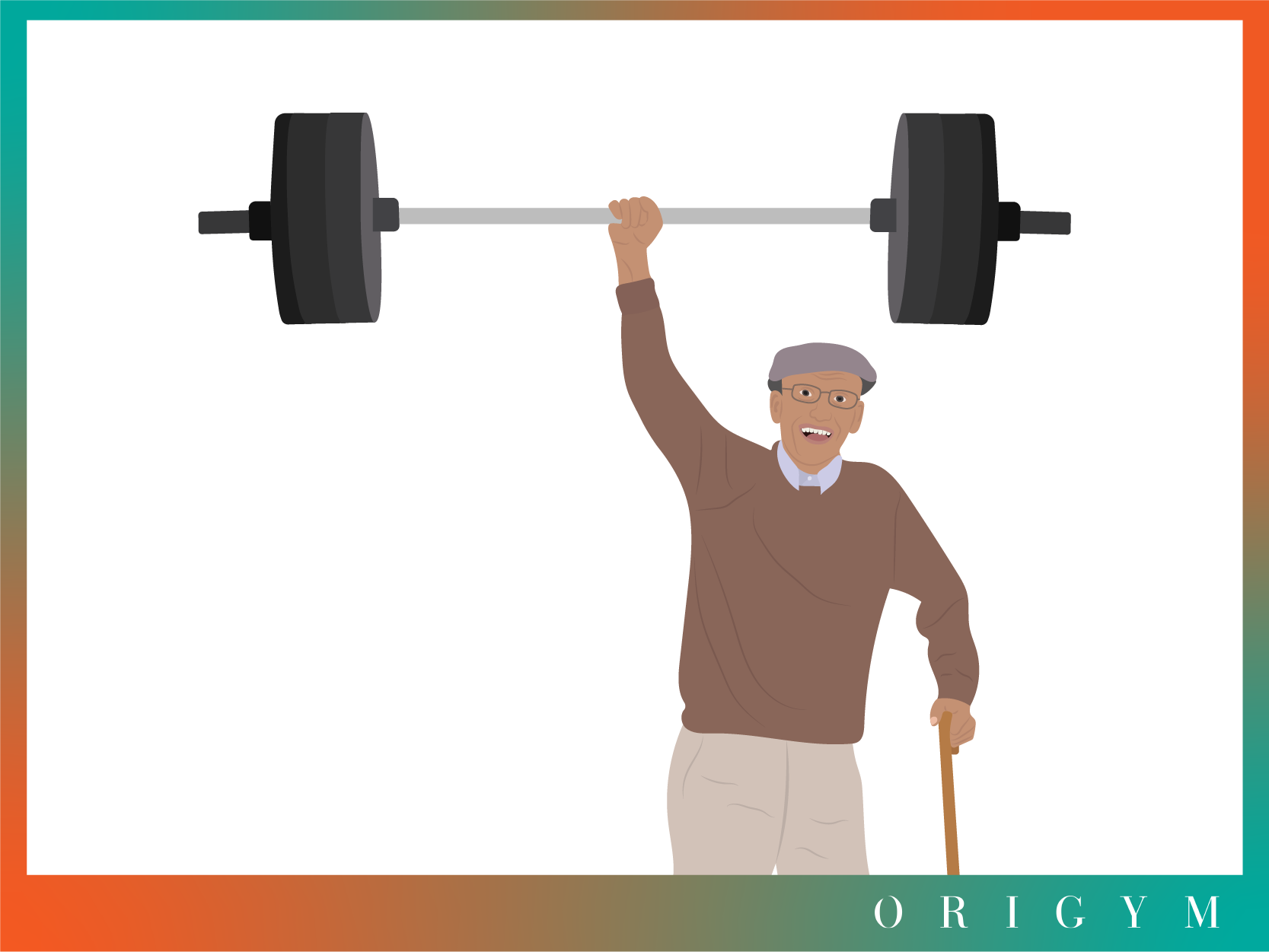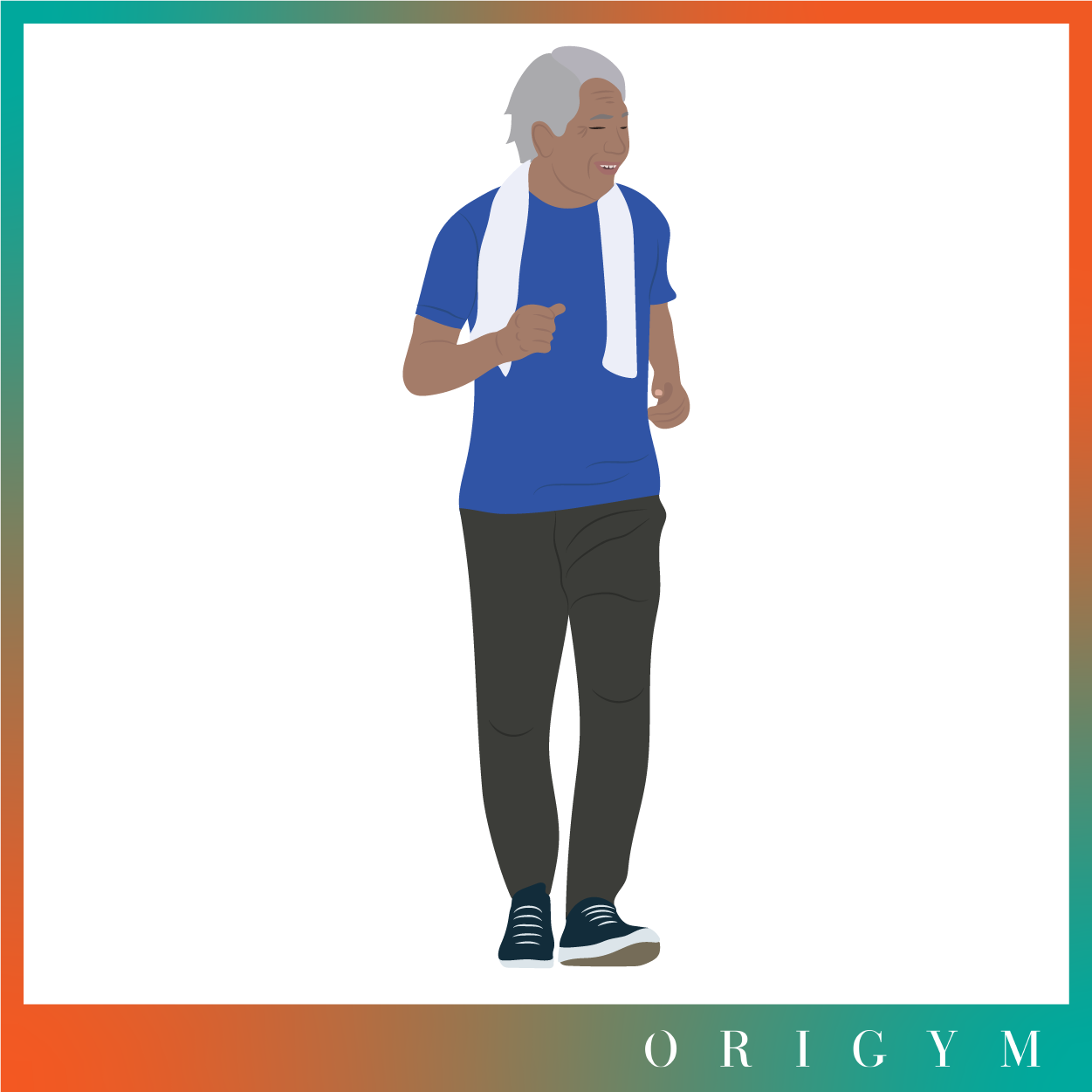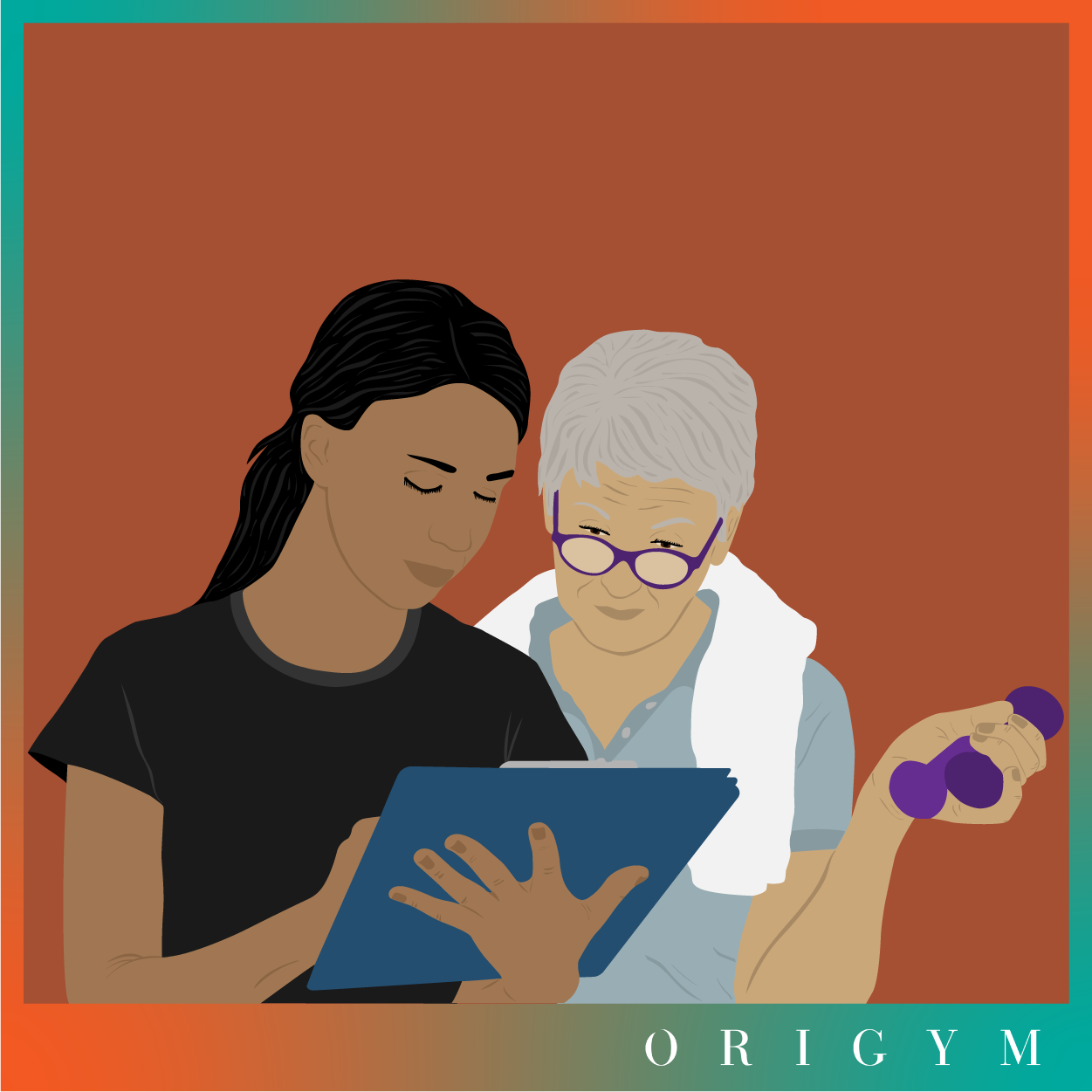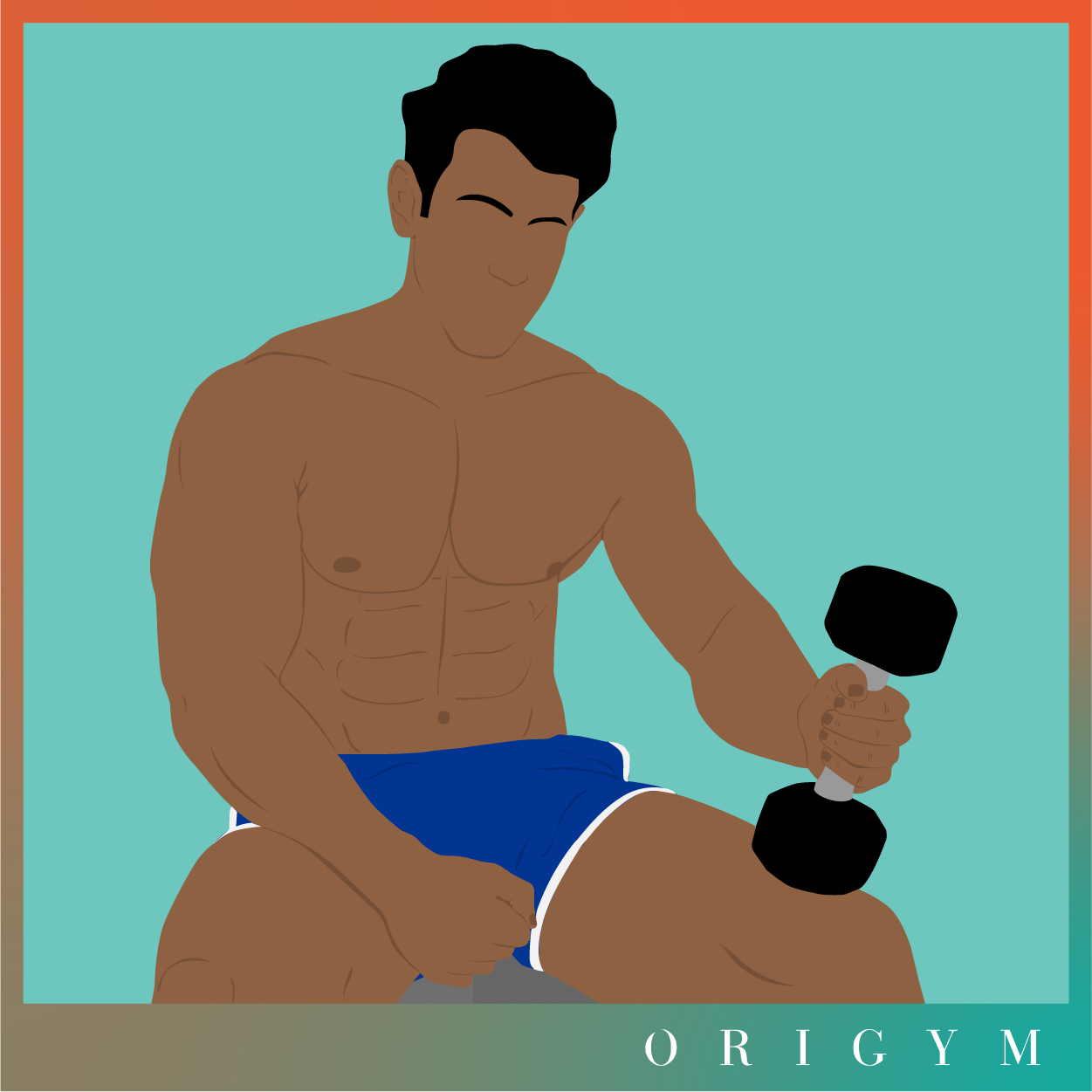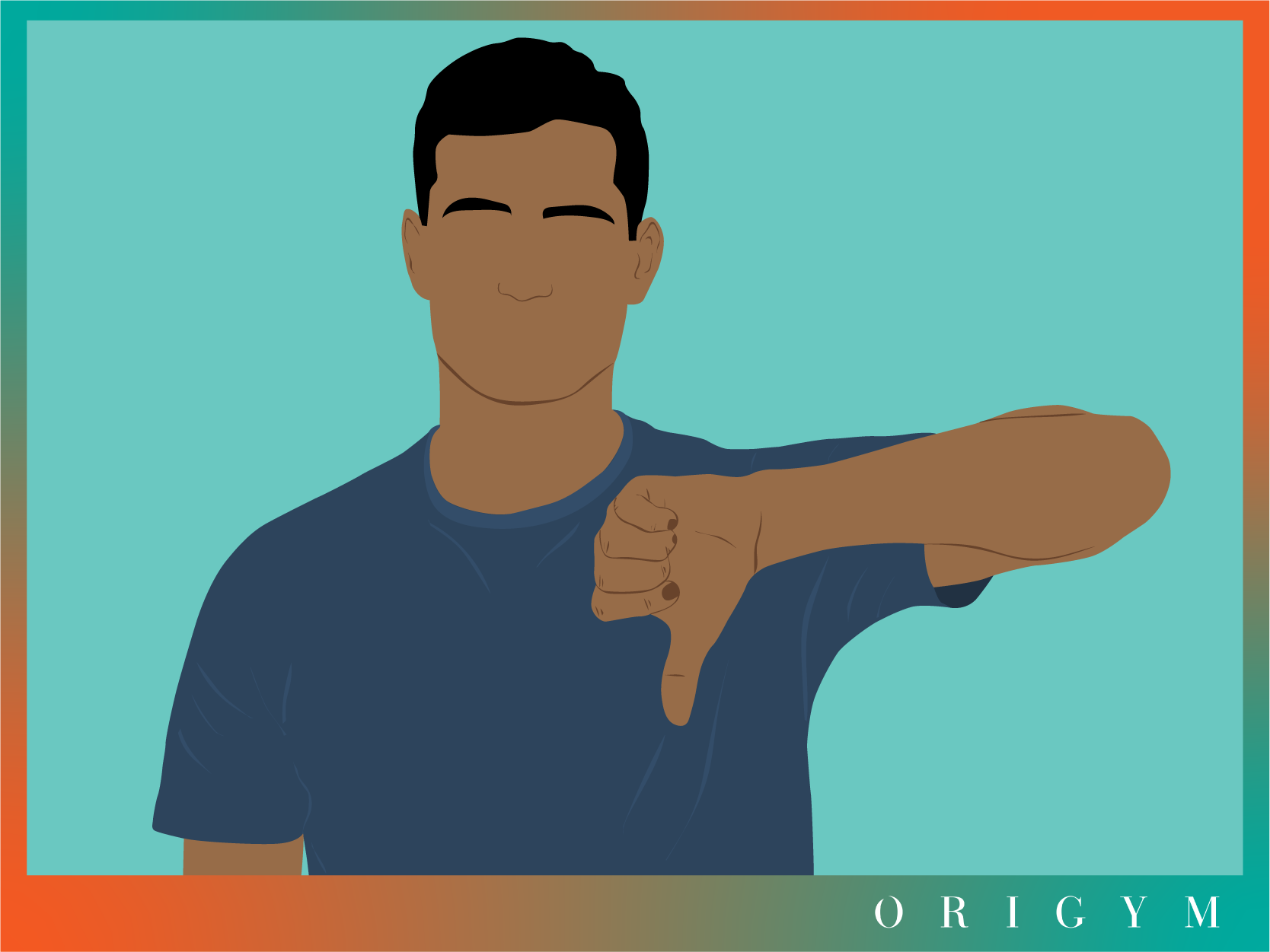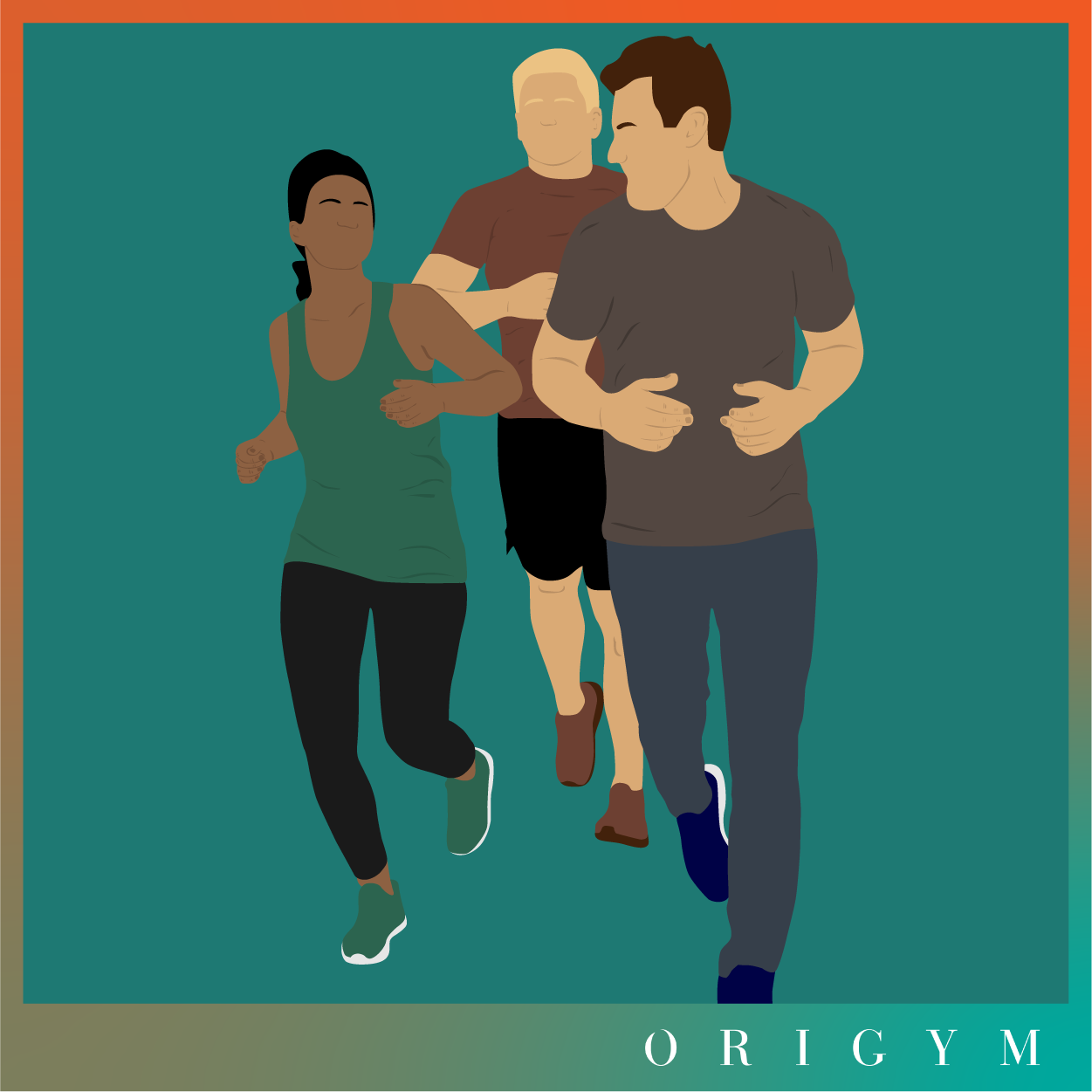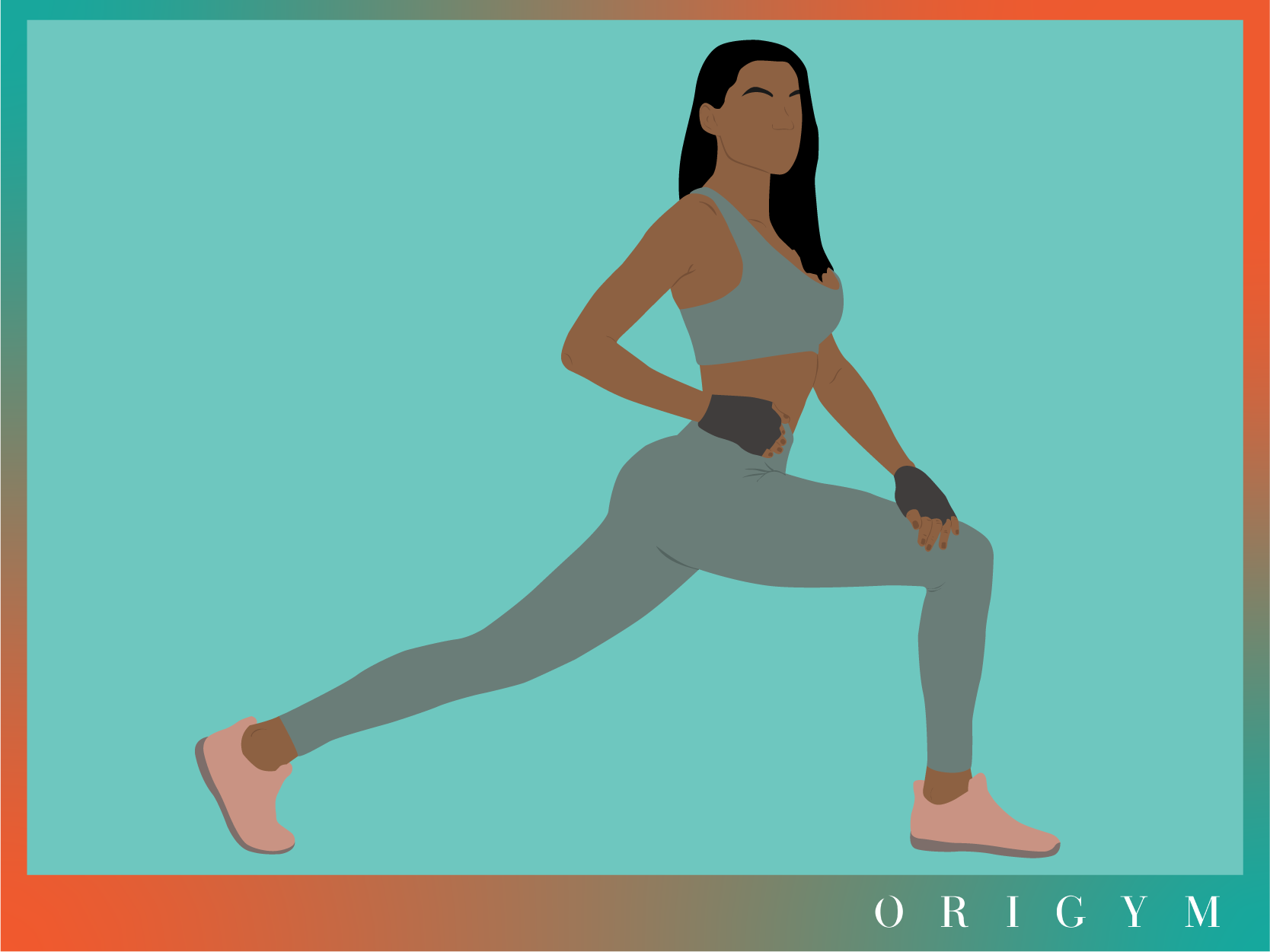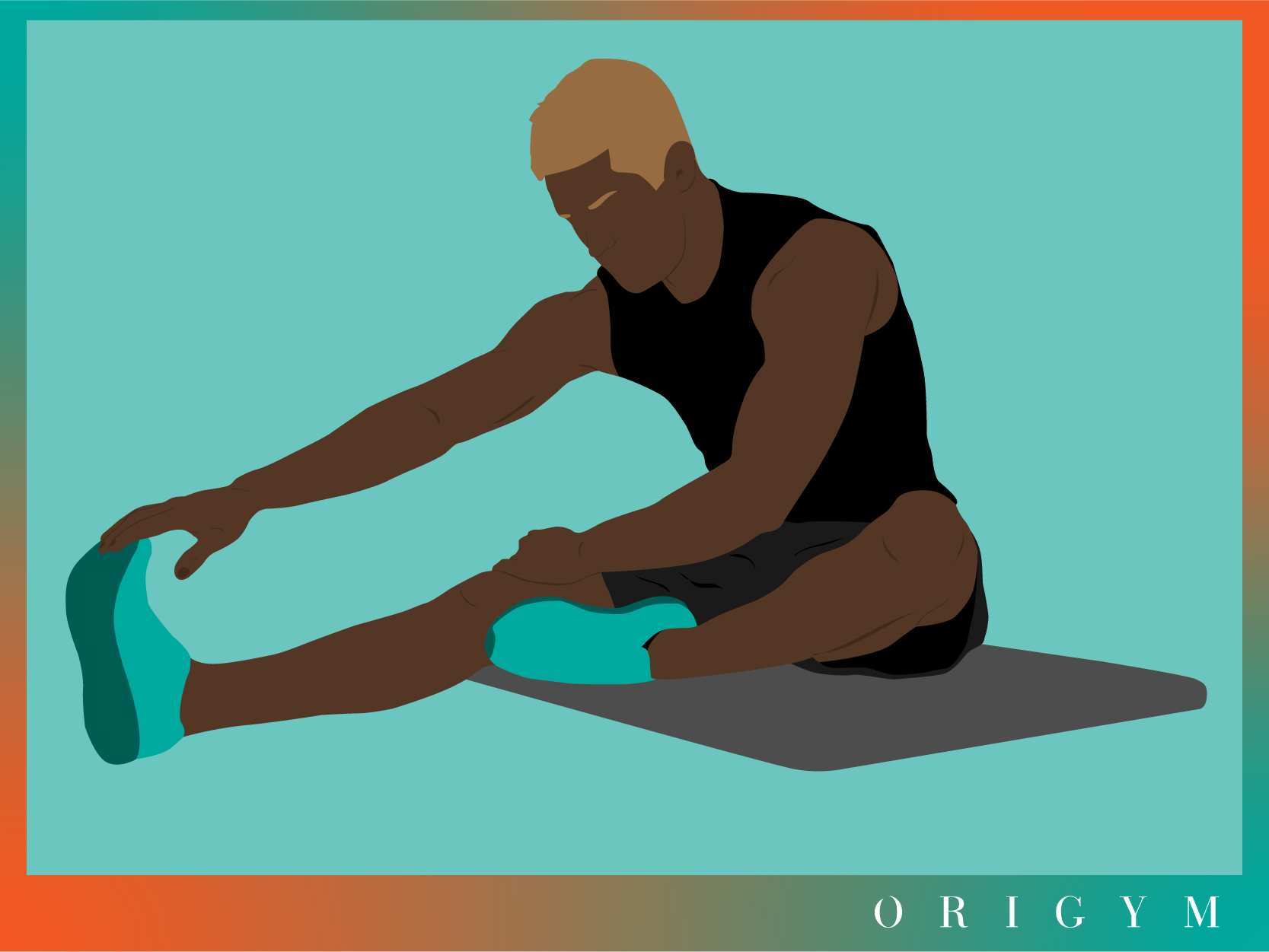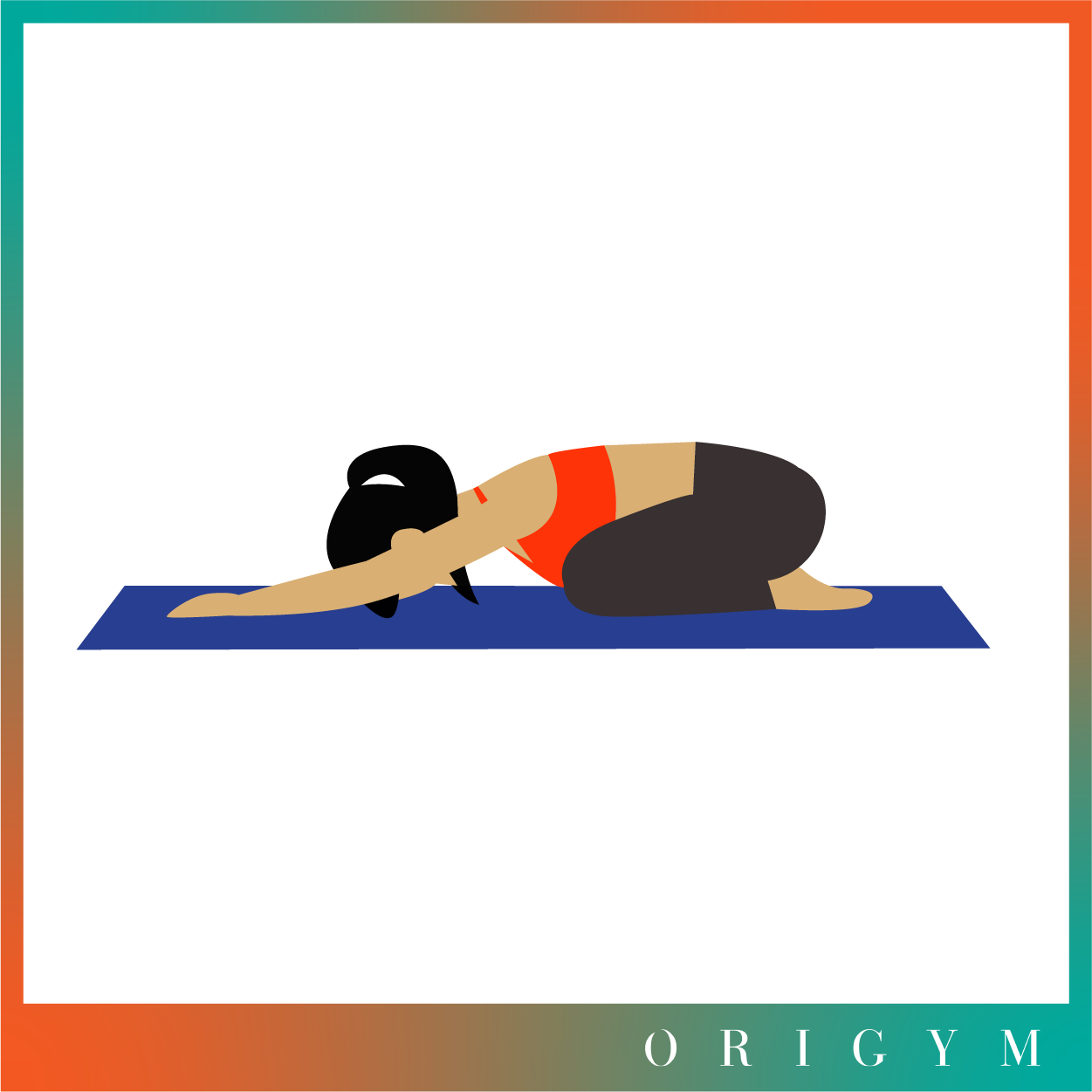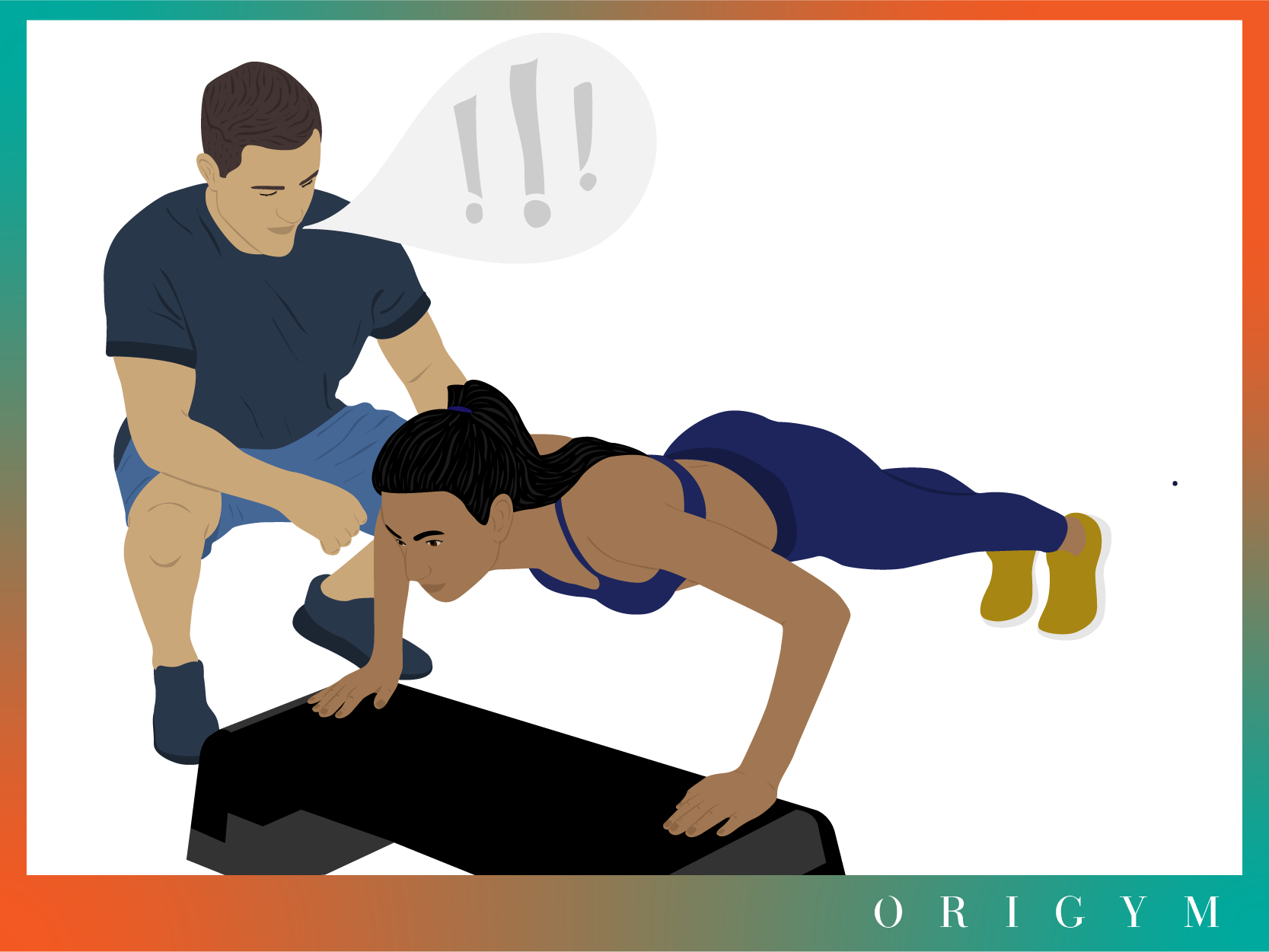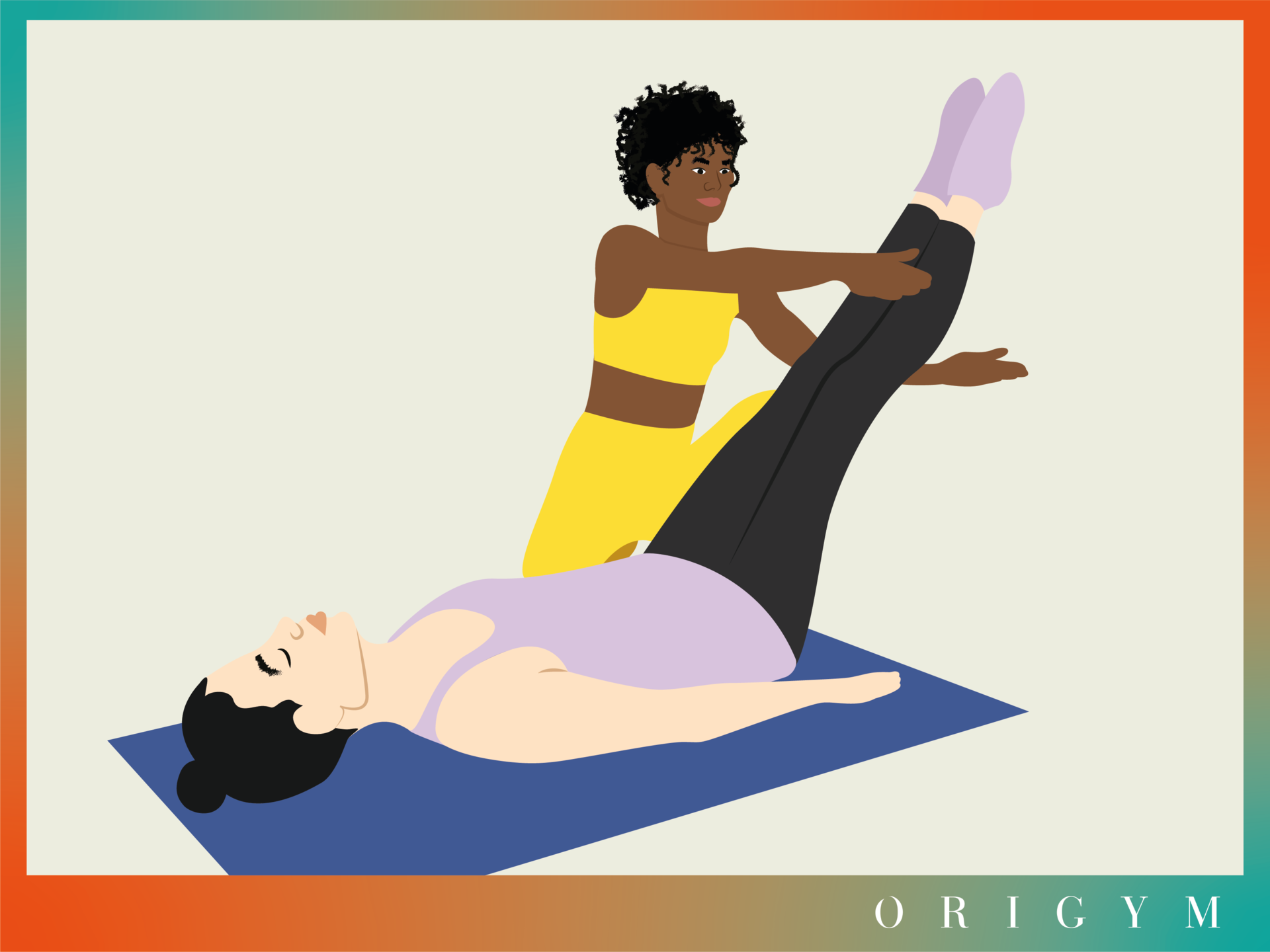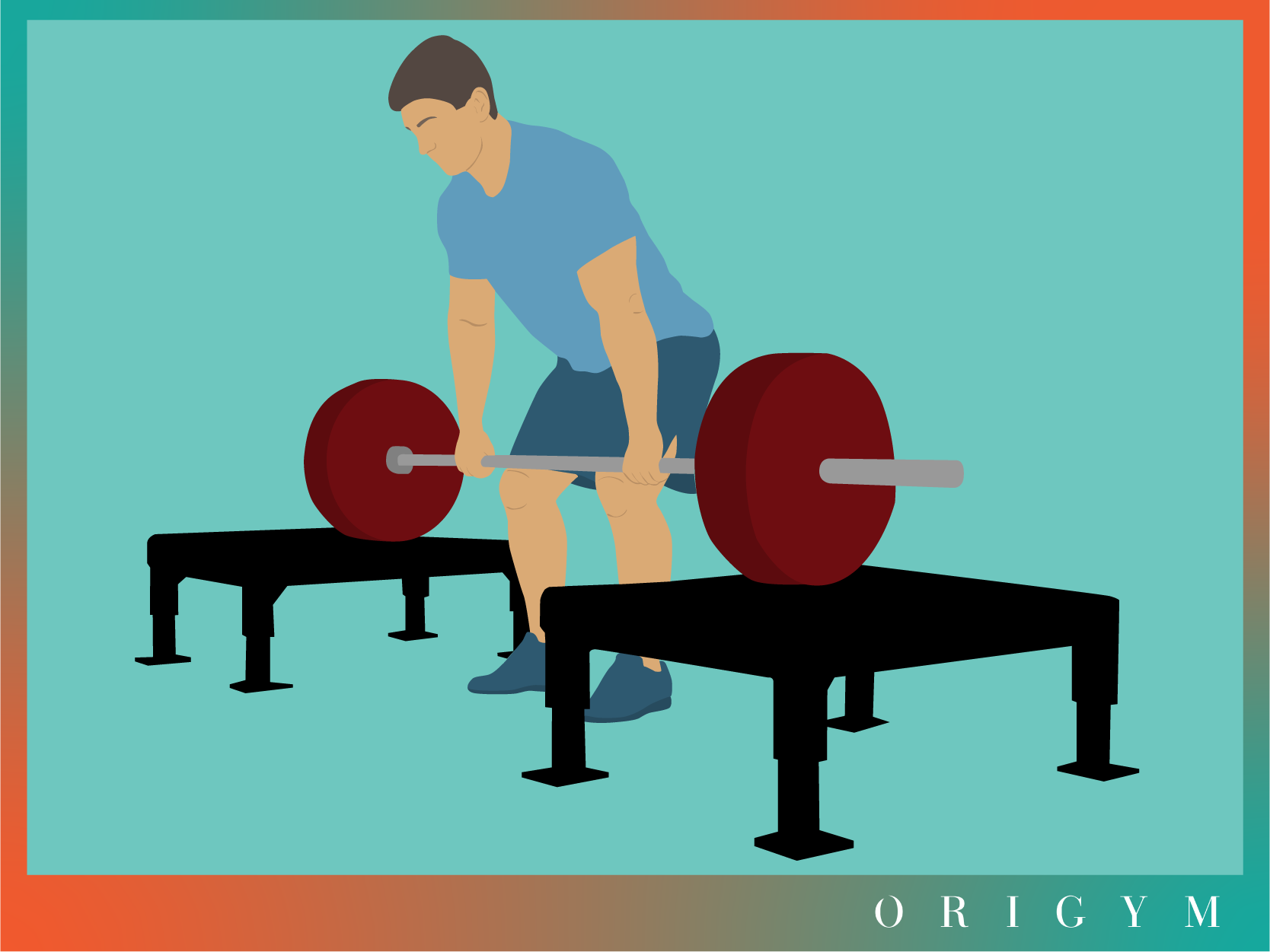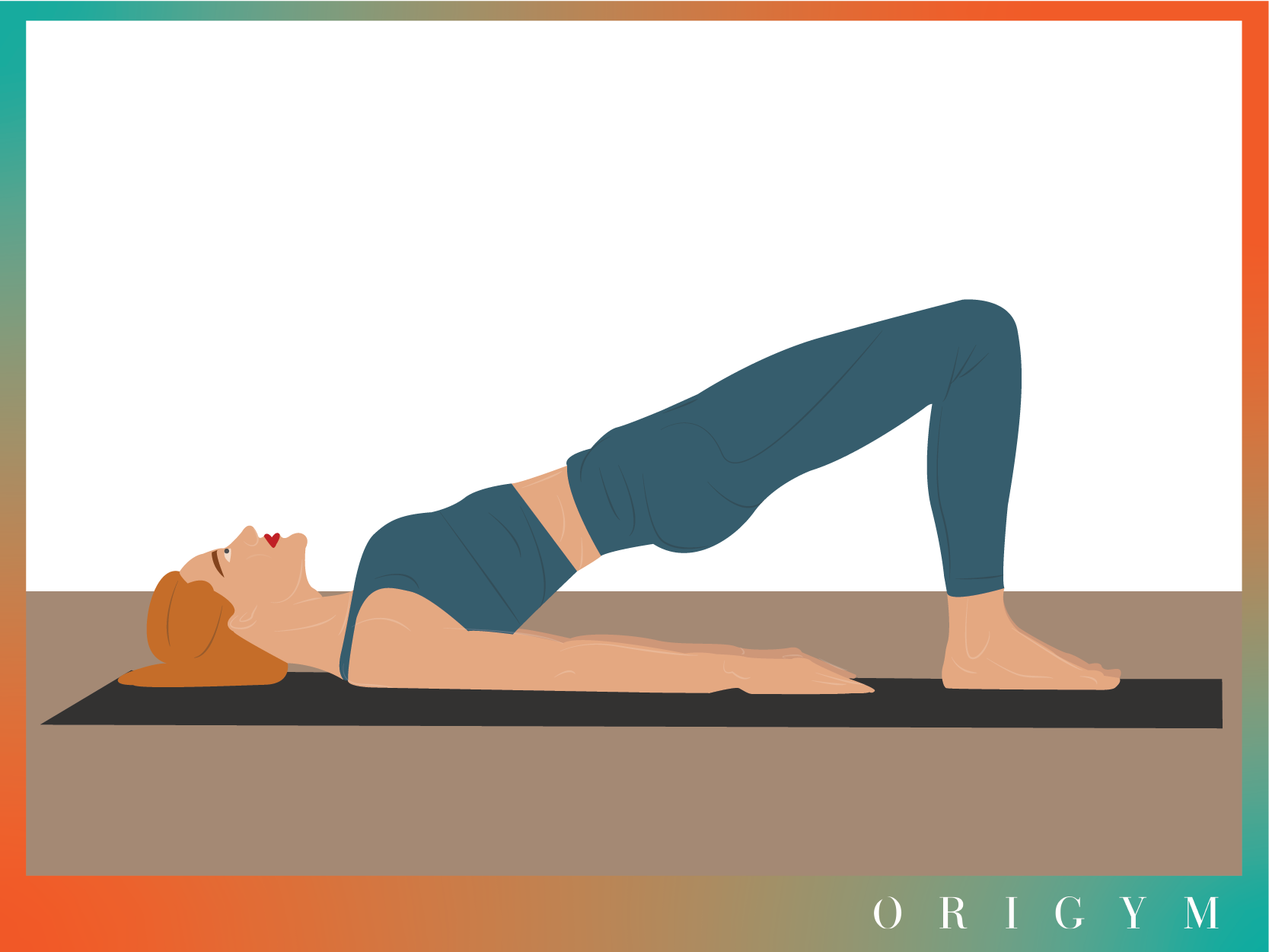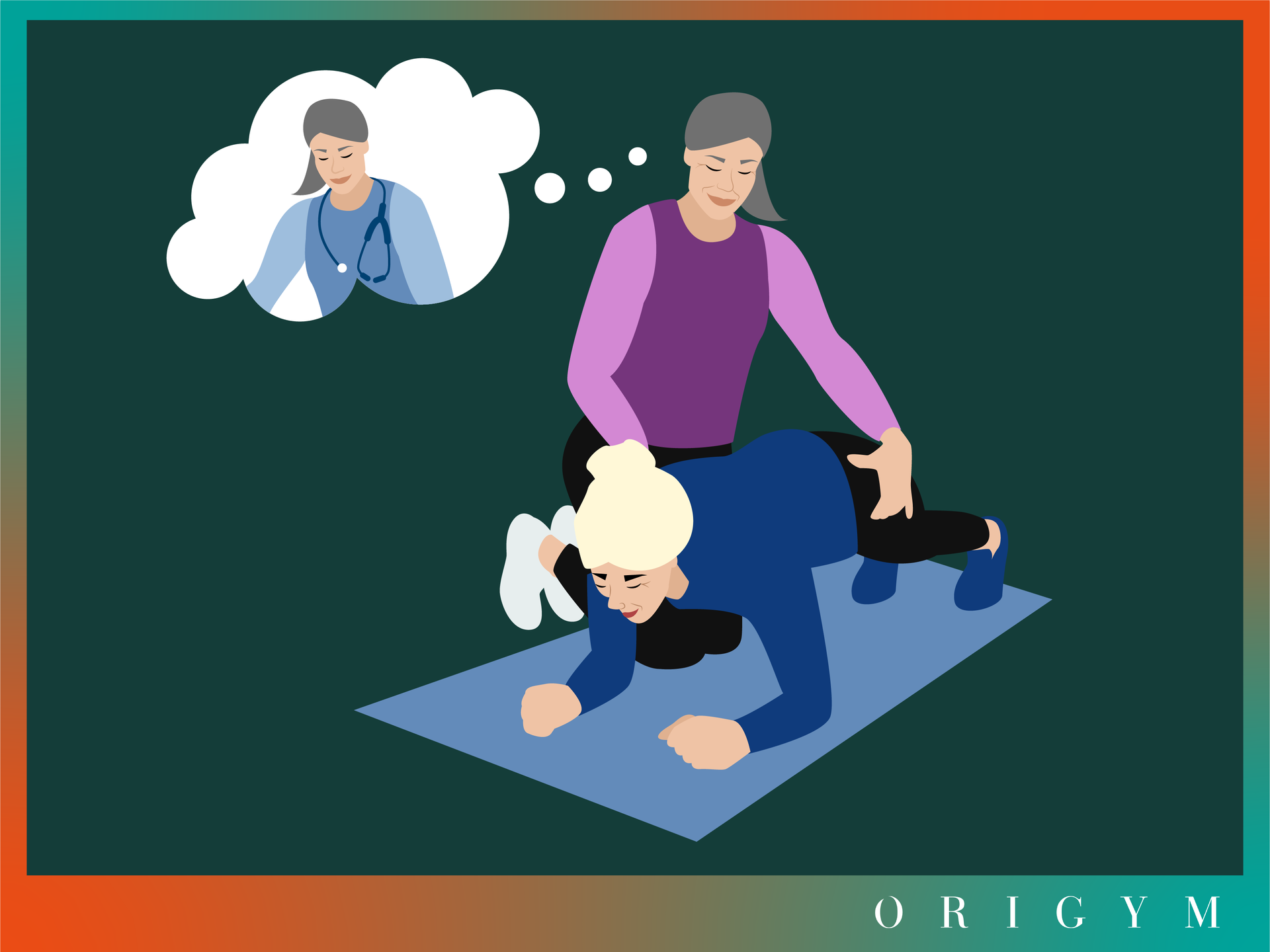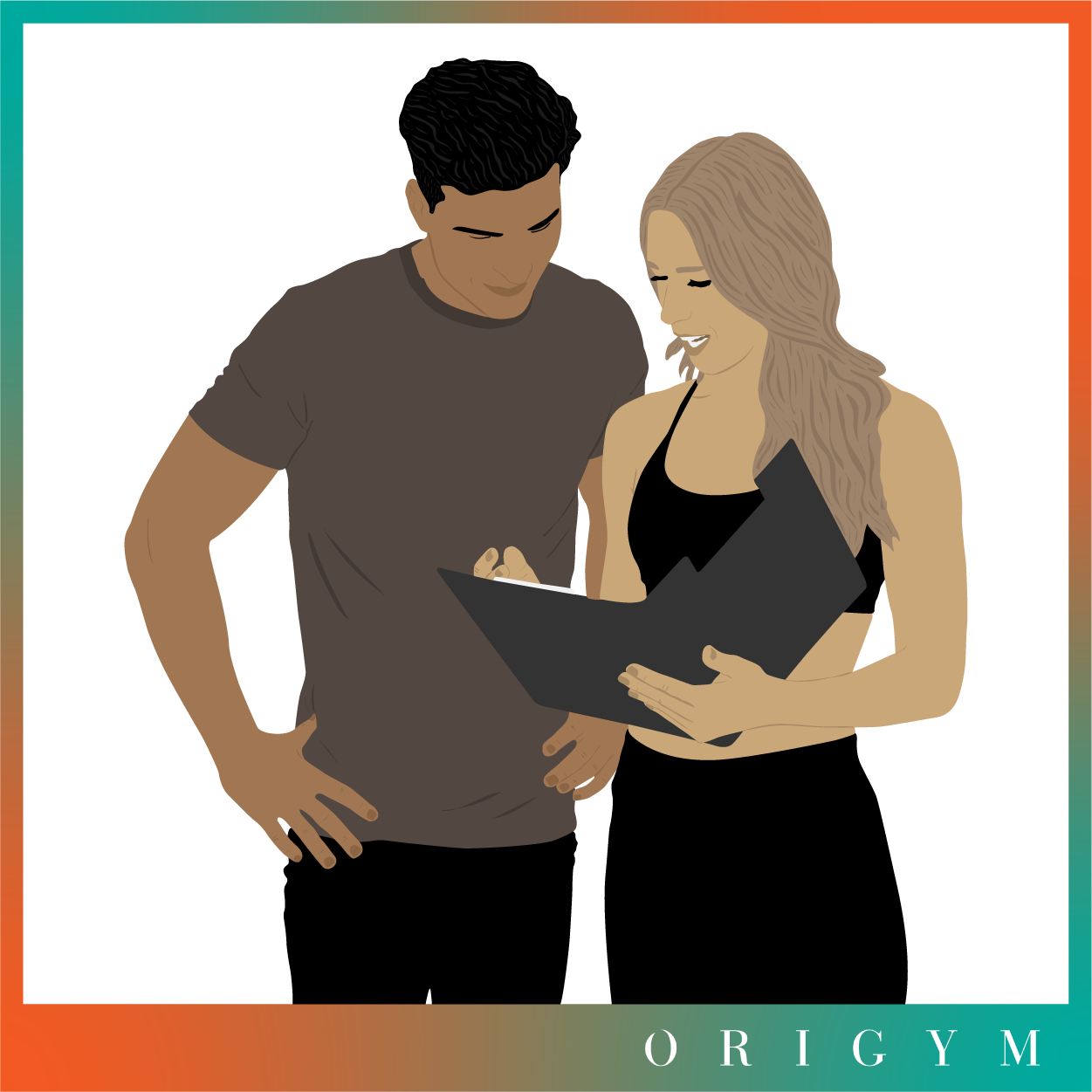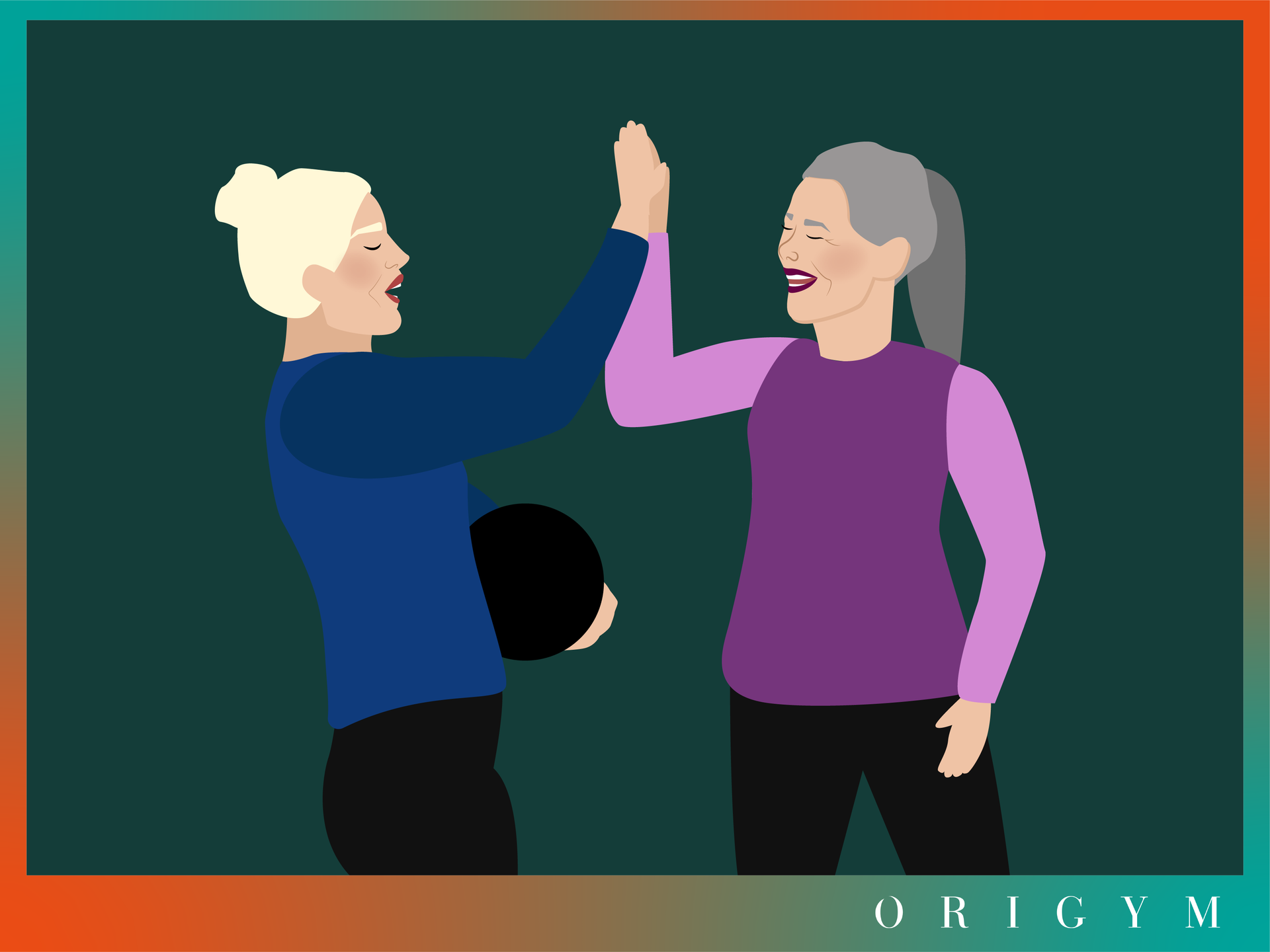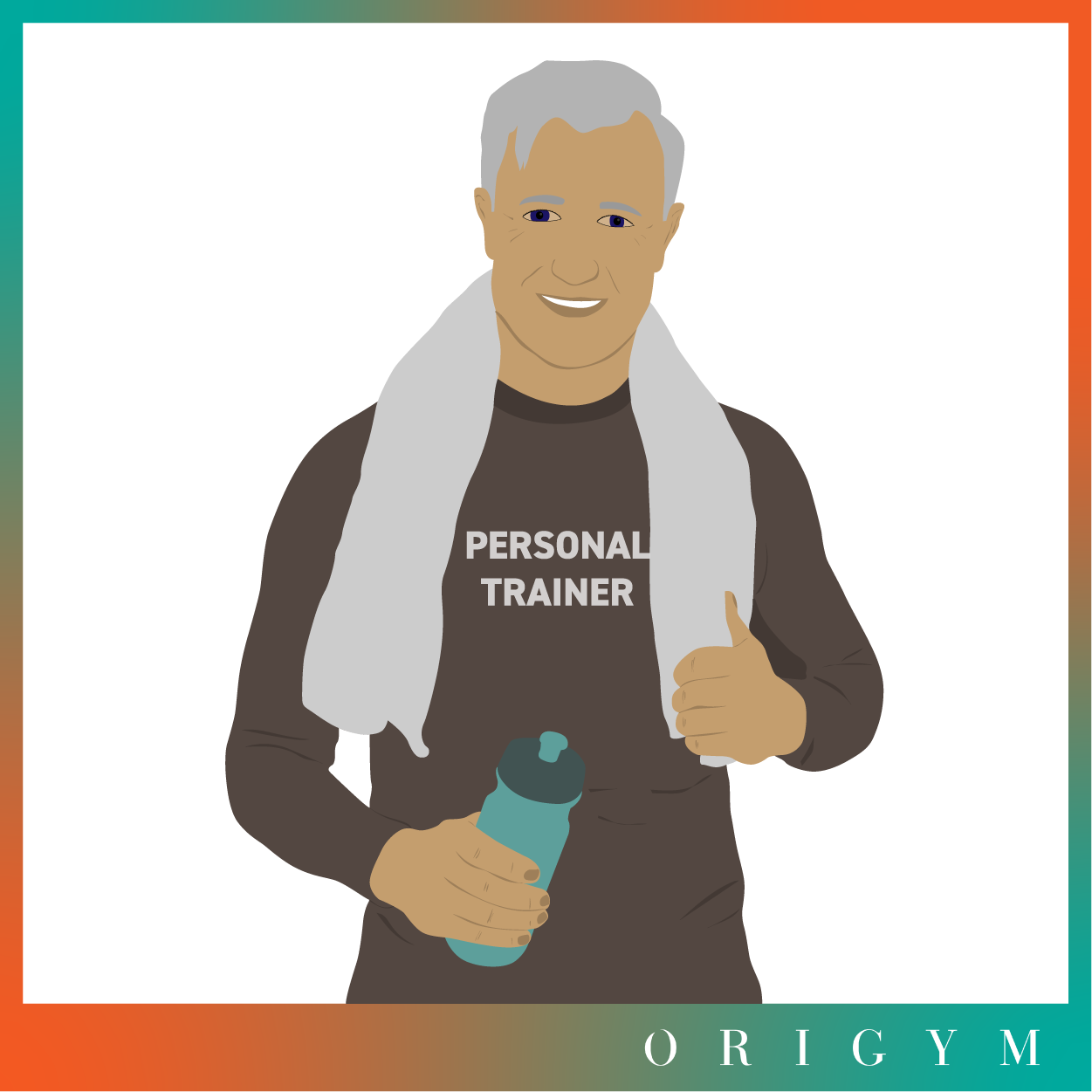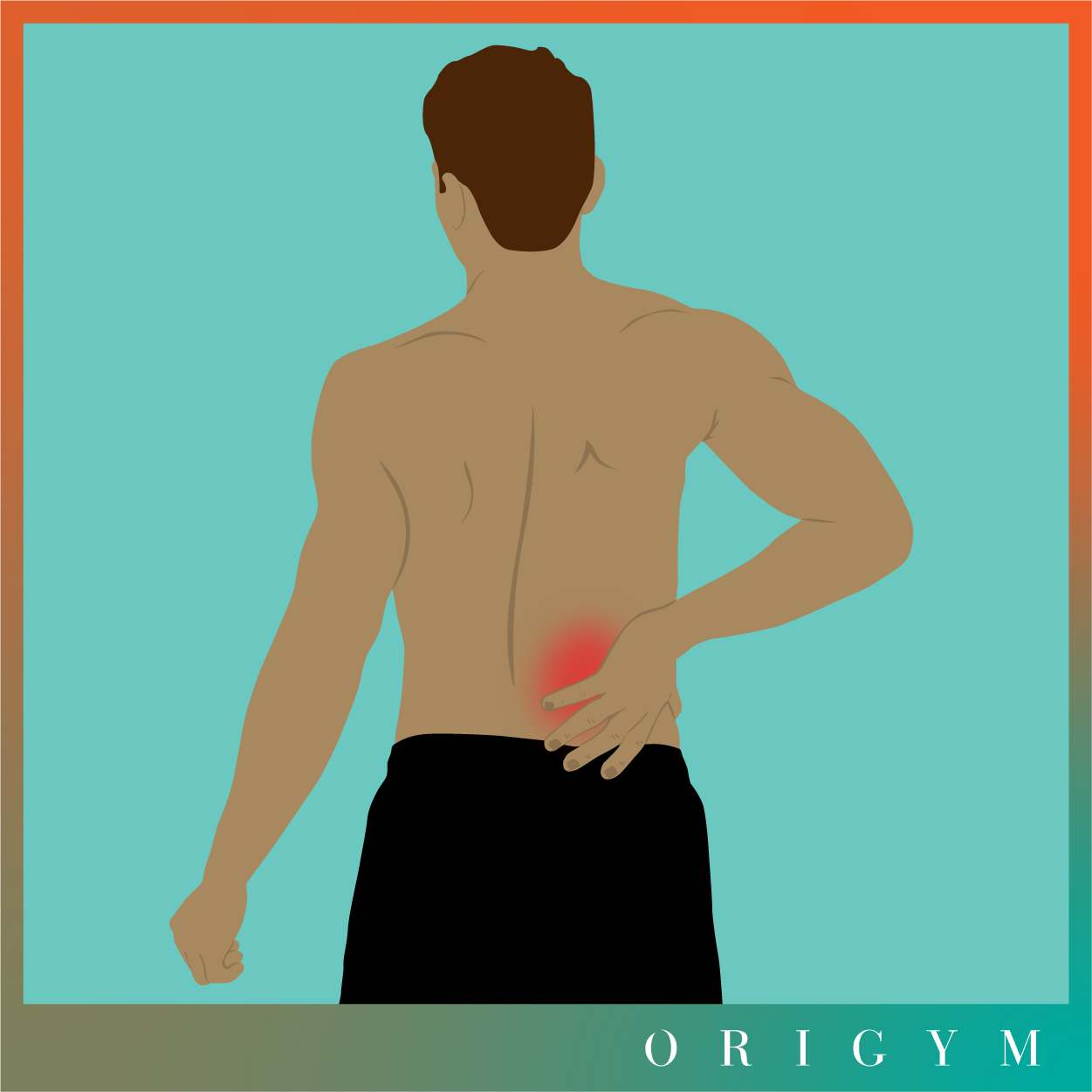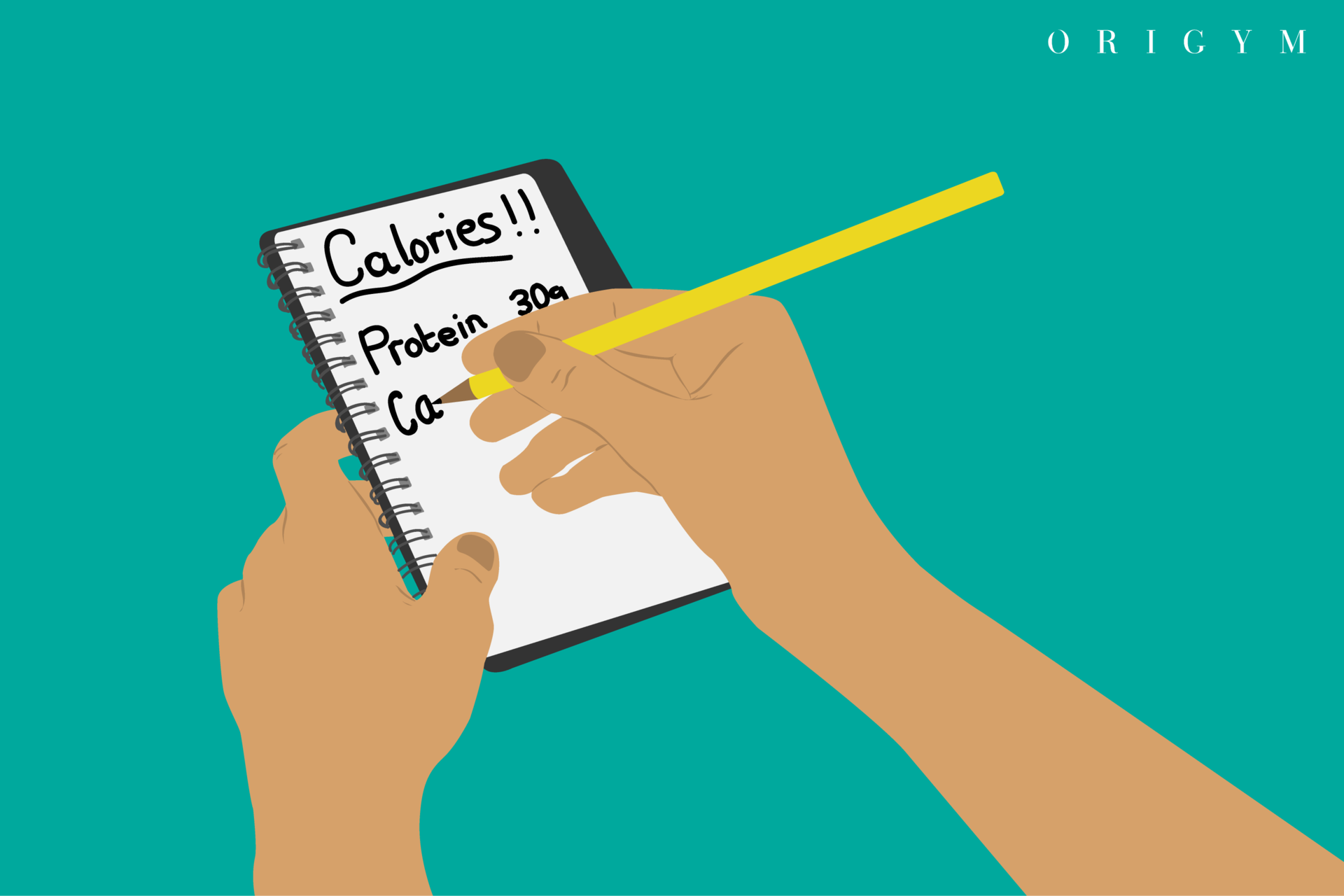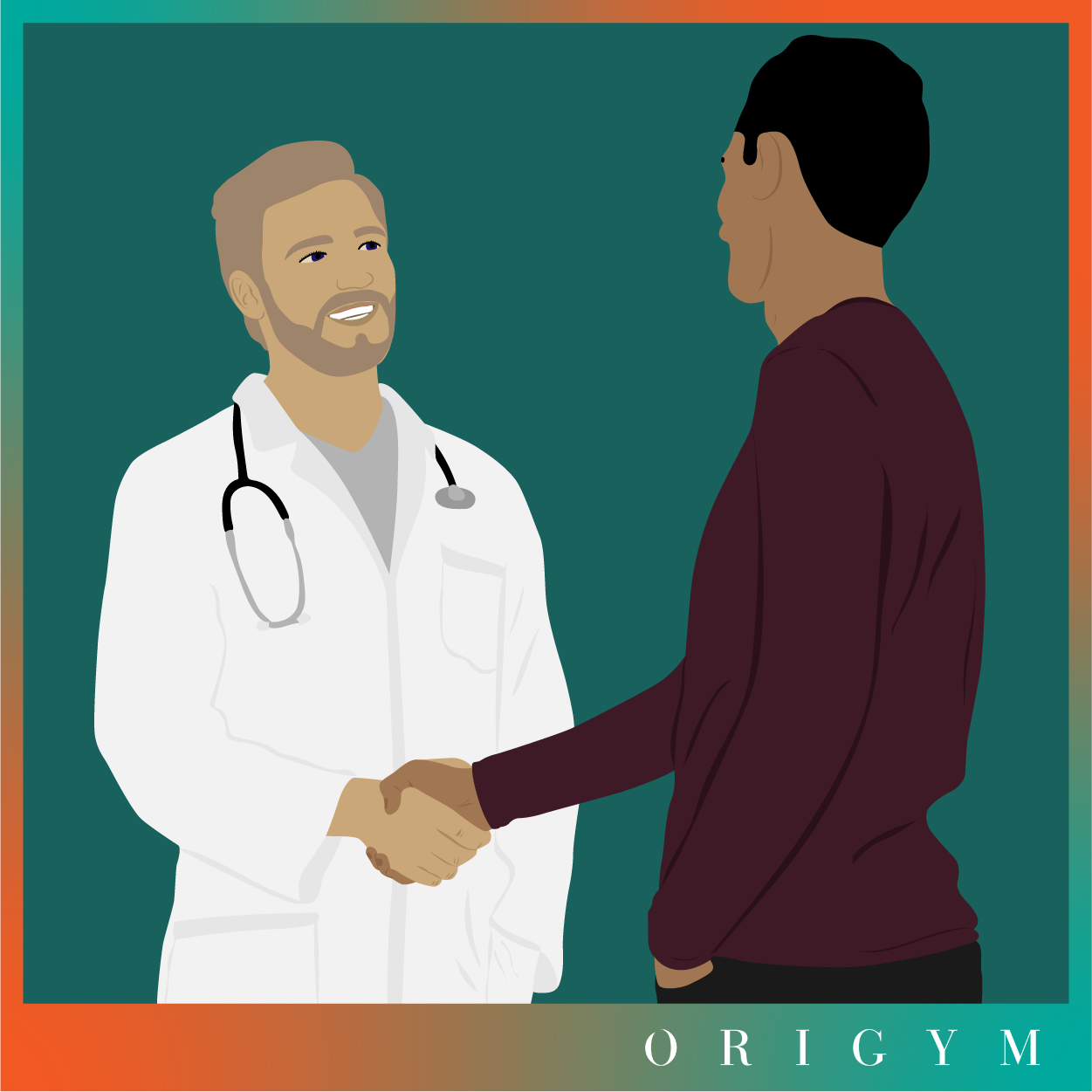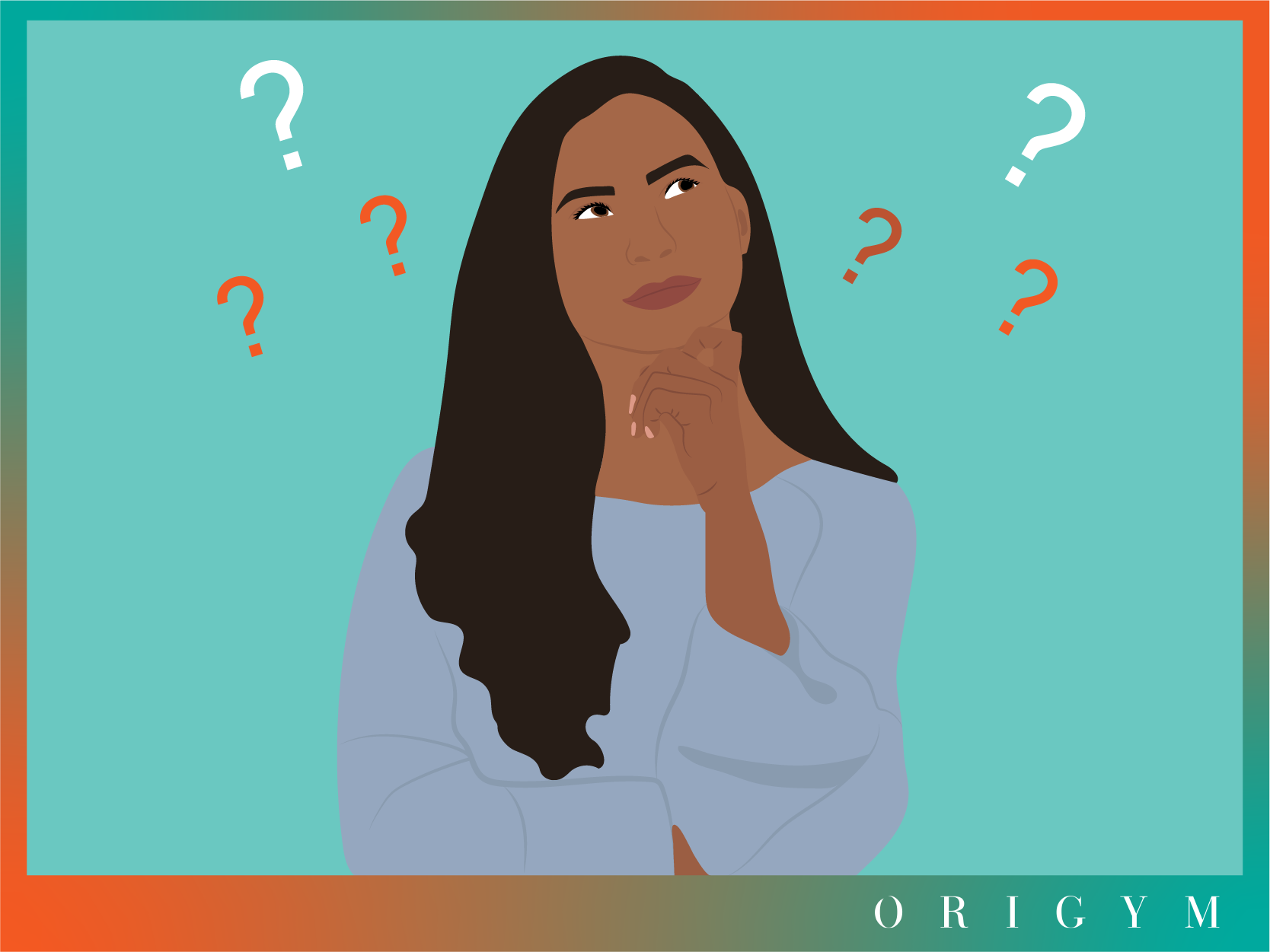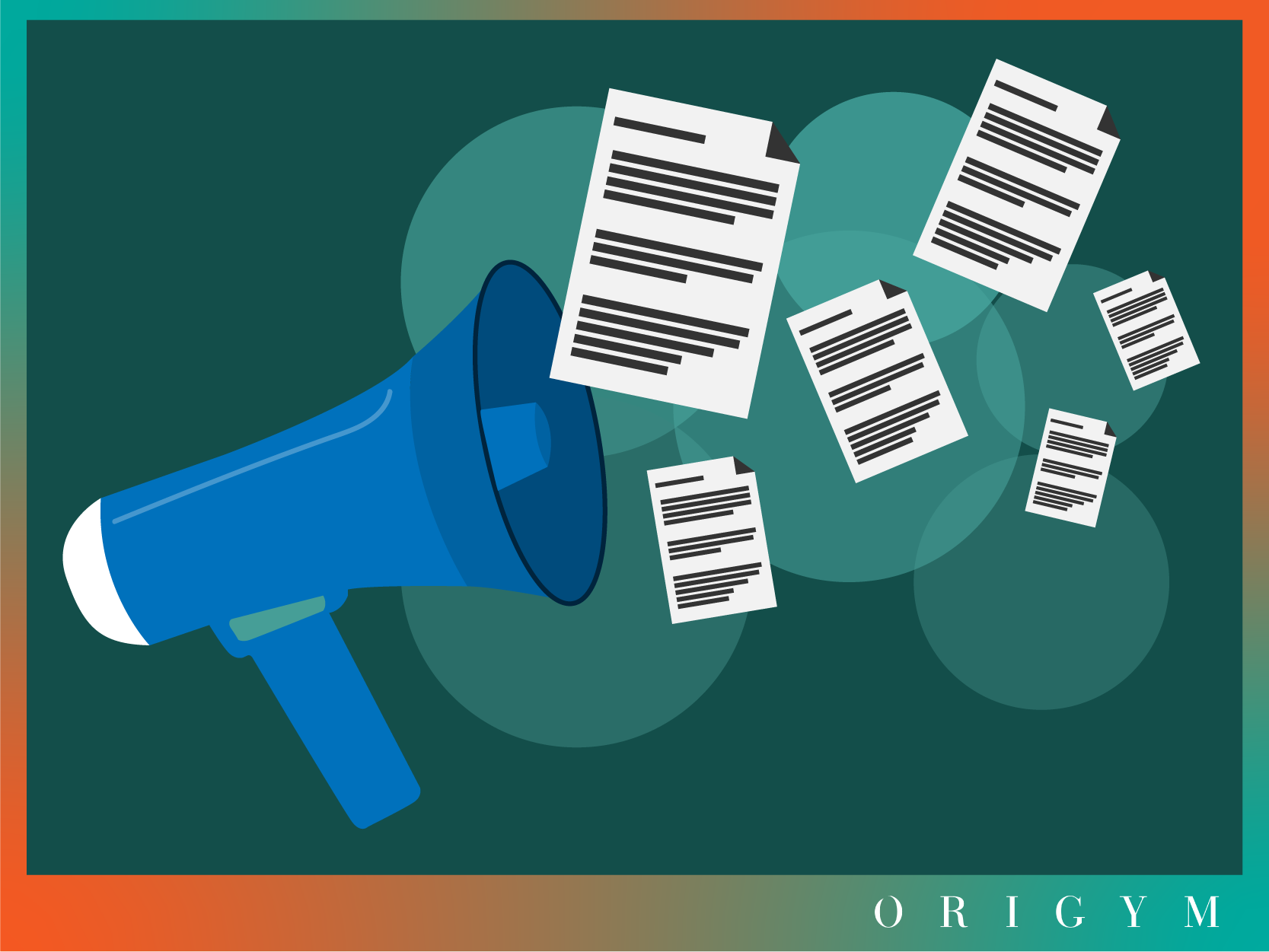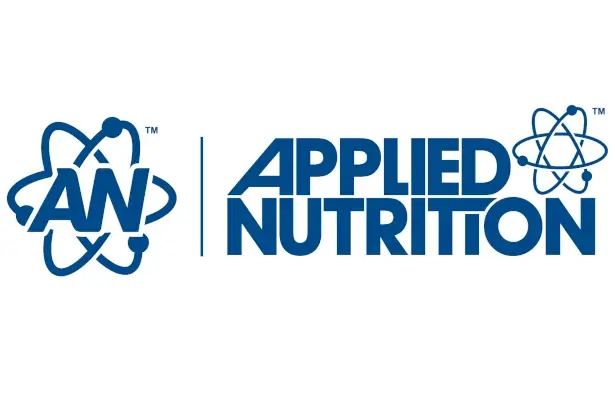The older generation are an often-neglected target audience when it comes to personal training. But in fact, personal training older adults is a lucrative niche with an ever-growing demand.
In this article, we’ve got some top tips for personal training seniors, so you can start taking on clients from this demographic.
We’ll cover:
- What Do We Mean By ‘Older’ Clients In Fitness?
- Tips For Personal Training Older Ciients
- Skills Required For Personal Training Older Clients
- How To Become A Personal Trainer For Older Clients
If you’re already a qualified personal trainer, why not take a specialist course such as our Level 5 Lower Back Pain Management qualification? This will give you the in-depth knowledge you need to confidently take on older clients with lower back issues.
Enquire today or download our free course prospectus here to browse the full range of courses on offer at OriGym.
What Do We Mean By ‘Older’ Clients In Fitness?
Before we get into some tips for personal training older clients, let’s establish what exactly we mean by ‘older’ clients.
So, at what age are you classed as ‘older’?
Unfortunately, there is no concrete answer! But in healthcare, for example, geratric care is typically for those over 65 years of age. This is the age also typically used when referring to older adults in the context of fitness.
For the purposes of this article, we will use the terms ‘older adults’, ‘seniors’ and ‘mature’ interchangeably to refer to clients over 65.
However, you don’t need to be overly strict about this number. For example, if you have a client who is 60, you can still apply our tips on personal training for older clients, even if there are a couple of years difference!
According to the NHS physical activity guidelines, older adults should do some form of light activity every day. Light activity can be anything from a walk around the park to standing up and sitting down.
They also recommend at least 150 minutes of moderate activity (e.g. cycling, walking, tennis) or 75 minutes of vigorous activity if you are already active (e.g. aerobics, swimming, hiking).
Just like people of all ages, many seniors will get a personal trainer to help them reach these exercise goals.
One major misconception about mature clients in the fitness industry is that older means weaker or less fit – this is not always true!
The older generation are indeed more likely to have health conditions or injuries that affect their strength or restrict their physical movement. But equally, young people can have these issues too.
In fact, an older adult can be just as if not more physically fit and healthy than someone half their age!
You need to have an open mind when personal training mature clients. But at the same time, you should of course be aware of their age and adapt your sessions accordingly. But do not underestimate them!
Tips For Personal Training Older Clients
#1- Start With a Physical Assessment
Before you start personal training an older client, it is essential to conduct an initial assessment with them.
An initial assessment is a chance to assess your client’s current fitness level and identify any injuries they may have. This will then help you determine their goals and create a tailored and effective programme for them.
This usually takes place wherever you will be training your client- whether in the gym or in their home, and should last between 30 minutes and an hour.
Here are 3 things we recommend doing during your first assessment with an older client:
Make them feel comfortable: This first session is a great time to establish a positive and supportive relationship with your client and ease any nerves they may have.
This is particularly important when personal training older adults, as they may be feeling apprehensive about returning to training after a break or after an injury, for example.
Keep in mind that many older clients may not have trained for a while, and some may have never set foot in a gym in their life.
You can make your client feel comfortable by starting with some general small talk, before you go on to talking about fitness. This will help them ease any nerves and help establish a rapport between you both, and make them more receptive when you come to discuss training.
Find out about their health history: This is important when training anyone, but particularly when working with the elderly.
You should take notes on any past injuries, health issues and previous exercise experience. These factors will help determine the kind of exercises you include in their programme, as you may need to make modifications to some exercises to accommodate for these things.
For example, someone with a lifetime of exercise experience will be able to do a very different level of programme compared to someone who has hardly ever exercised before, or a client who has only recently recovered from a long term injury.
You may also want to carry out a postural assessment as part of this. This will give a good indication of their muscular structure, alignment and the range of motion in their joints- the latter of which is particularly important when personal training mature clients.
Establish goals: This initial assessment is also a great time to establish what your client’s exercise goals are.
In general, older adult’s goals will more likely be functional, rather than aesthetic focused.
For example, many younger clients may be more interested in getting a certain physique, such as a six-pack, or building their glutes.
But older clients may be more interested in achievements that will improve their day to day, such as bending down to pick things up or being able to walk to the shop.
We recommend using the SMART fitness goals criteria to ensure that your goals are Specific, Measurable, Attainable, Relevant and Time-Bound. For example, a SMART fitness goal for an older client could be:
To be able to touch your toes in 4 months time, by improving hip and hamstring flexibility.
Having a clear goal in mind will help you create a programme that is truly tailored to your client’s needs. You can also keep referring back to it throughout the programme to monitor their progress and keep them motivated.
#2- Build Up Strength Slowly
When personal training seniors, some PTs can be scared to use things like dumbells and kettlebells with their clients. But being older does not necessarily mean weaker!
In fact, strength training is particularly important for seniors, as strength and muscle mass can decline a lot faster in older age.
However, this doesn’t mean you should go straight to the squat rack with an older client.
Instead, adapt the type of strength training you would typically do with a client, perhaps by working at a lower intensity and focusing more on resistance than lifting heavy.
For example, you should work on basic movements such as a bodyweight squat, focusing on increasing range of motion and encouraging them to use good form before adding any weight.
When they are ready to add weight, start small and increase in smaller increments than you would usually.
Fractional weight plates (i.e. 0.25 and 0.5kg) are a great way to do this. Over the weeks, months or years, these small increments will all add up!
#3- Avoid Extreme/ High-Intensity Exercises
When personal training older adults, you should generally avoid more ‘extreme’ exercises.
This can include explosive cardio exercises such as burpees, sprints and box jumps.
Weighted explosive exercises include things like the clean and press or kettlebell swings can also be too much for elderly clients, as they require a high level of stability and balance as well as strength.
Extreme HIIT workouts are also generally not advised when it comes to personal training for older clients. Although the general principles of interval training are beneficial for everyone, you should reduce the intensity for more mature clients.
Instead of high-intensity workouts, focus instead on flexibility and mobility, using slow and controlled movements.
#4- Don’t Neglect Cardio
Although you should generally avoid extreme movements like sprints, this doesn’t mean that you should completely avoid cardio when working with eldery clients.
There are lots of benefits of cardio, particularly for seniors. For example, it strengthens the respiratory and circulatory systems, which is especially beneficial for older adults as these systems can naturally become weaker with age.
However, you may need to adapt the type of cardio you do. For example, older adults are more likely to have balance issues, so running on a treadmill may not be a good idea.
A better choice would therefore be to use more supportive machines, such as the seated bike.
Walking is also one of the best forms of cardio you can use when personal training seniors. This could be done on a treadmill, or you could encourage your client to walk more in their daily life outside the gym.
#5- Warm Up Your Older Clients
Warming up and cooling down is always important, but especially when personal training older adults.
Some benefits of warming up are:
- Increases body temperature. This makes more oxygen to flow to the muscles, which will allow them to contract and relax more easily during exercise. This is particularly beneficial for older adults who may be more sedentary during the rest of their day, so their muscles will need time to warm up.
- Reduces the risk of injury. Warming up the muscles before exercising helps increase their elasticity, which reduces the risk of overstraining them. This is particularly important for older clients to do as they are generally at a greater risk of injury.
- Helps them mentally prepare for the session ahead. Warming up before launching into the bulk of your session also allows your client to mentally prepare for exercise. It also allows them to settle into the gym environment, as well as increasing focus and concentration!
- Increases range of motion. Older clients will typically have a smaller range of motion in their joints, such as the ankles, shoulders and knees. Warming up will help these joints reach their maximum range of motion before exercising.
Any kind of stretching you do before a workout should be dynamic, rather than static. In other words, the stretches involve movement, rather than holding a stretch for a long period of time.
Some examples of warm-ups you could do with your older clients are:
- Walking or jogging on the spot (30 seconds to 1 minute)
- Shoulder rolls (20 each direction)
- Neck rolls (10-15 reps)
- Ankle rolls (10 each side)
- Side stretches (10 each side)
- Standing quad stretch holding on
The whole warm up should last around 10 minutes, but may be more or less depending on the ability of your client and the length of your session.
#6- Cool Down After the Workout
As well as warming up before your session, you should include a cool down afterwards.
This allows your client’s muscles to slowly relax again after being used, and allows the heart rate to slow back down to a normal pace.
This is particularly important for older clients, as abruptly ending a workout could cause dizziness or a sudden decline in blood pressure and blood sugar levels, which is of course dangerous!
Stretching the muscles whilst they are still warm after exercise will also help prevent injury and reduce muscle soreness and the likeliness of cramp.
Cool-down exercises for older adults should be easy on the joints, so avoid any inversions such as the downward dog.
Some good example of cool-down exercises for seniors are:
- Chest stretch
- Standing quad stretch
- Seated hamstring stretch
- Corpse pose (lying down on the floor)
Like a warm-up, a cool-down should be around 10 minutes long. But again, this depends on how long your session is.
—
Enjoying this article so far? Here’s 3 more that we think you’ll love;
- Am I Too Old To Become A Personal Trainer?
- When Should A Personal Trainer Refer Clients To Another Professional?
- What Not To Do As A Personal Trainer: 17 Things To Avoid
#7- Focus on Flexibility Training
As well as strength and cardio, you should also focus on building flexibility.
There are so many benefits of flexibility training for everyone, but particularly when personal training mature clients.
This is because as we age, we are more likely to lose muscle tone, skin elasticity and bone density. Tendons and joints get stiffer too, which all results in reduced flexibility.
The benefits of flexibility training for older clients include:
- Decreases risk of injuries such as fractures and strains
- Improves ability to carry out daily functional tasks (such as bending down to pick things up)
- Can delay the onset of health issues such as arthritis and diabetes
- Improves posture
- Increases mobility and range of motion in joints
- Improves circulation
When doing flexibility exercises with older clients, never force a stretch and always take things slowly. Keep stretches simple and even seated if possible, for example a seated overhead side stretch would be a suitable option.
If you do give them a standing stretch, such as a standing quad stretch, make sure to have the client hold on to something like the wall or the side of a chair.
You should also encourage them to keep a slow and steady breath through a stretch, and never lock out joints.
#8- Be Clear With Your Instructions
Strong communication skills are one of the most important skills of a personal trainer, and this is especially the case with older clients.
When working through an exercise with a mature client, you may need to give even more detailed prompts than you usually would.
This is because as we have mentioned, they may not have done these kinds of exercises before, or at least not for a long time.
For example, you may have younger and more experienced clients who understand what to do when you say, ‘engage your core’.
But if an older client has never heard this term before, you will need to give more prompts to help them understand how exactly to do this.
You may also need to explain exactly what the core is, so that they can have a better mind-to-muscle connection.
You should therefore be prepared to break down exercises in more detail than you may be used to.
As well as good communication skills, this requires patience – a skill which we will explore in more detail later in this article.
#9- Keep Exercises Close to the Floor
A good tip for personal training the elderly is to keep exercises close to the floor. In other words, use exercises where they have a low centre of gravity.
This is simply because the older you get, the more balance can become an issue, increasing the risk of falling.
So when offering personal training for older clients, stick to exercises that are close to the ground or involve two feet on the floor at all times, such as:
- Squats
- Mat-based ab exercises such as planks, crunches, bicycle twists and leg raises
- Push-ups
- Bicep curls (standing or seated)
Since balance deteriorates with age, you could also counter this by including some exercises designed to strengthen their balance.
However, remember to modify any balance exercises to make them safer for older clients who are more at risk of falling.
For example, you could work up to a single leg balance by getting them to hold on to the wall or a chair first.
You should also always spot older clients, more so than you would with others, even during bodyweight exercises. Again, this is because there is a higher risk of them losing balance and falling.
#10- Think About Where and When You Train
When personal training seniors, you may need to think more about where and when you hold your sessions, and if need be, adapt to the needs of your client.
For example, a loud, busy gym setting at peak times may not be the best time or place for an older client who is hard of hearing.
Plus, in a busy gym there is more risk of bumping into people or equipment.
If you are training an older client in a gym, you may therefore want to opt for off-peak times.
Many older clients may even ask if your sessions can be held in their homes, particularly if they have mobility issues that restrict them from leaving the house.
Training clients in the comfort of their own home has tons of benefits for both you and your clients. You can find out how to become a mobile personal trainer here.
#11- Focus on the Hips During Training
Hip pain is a notorious problem that comes with old age, so it is important to include plenty of hip-strengthening exercises when personal training older adults.
Weak hip muscles can make it difficult for seniors to perform everyday tasks such as walking, going up and down stairs, and bending down.
However, before doing any hip exercises with an older client, make sure that you have established whether they have any existing hip problems or not, as they may be under guidance from their doctors as to the kinds of movements they can do.
Some hip exercises that are particularly beneficial for seniors are:
- Glute bridge
- Hip circles
- Seated marching
- Standing hip abduction
#12- Instruct Unilateral Exercises
A bilateral movement is when the limbs on both sides of your body are used at the same time, whereas a unilateral movement is when each limb works independently.
For example, a barbell curl requires you to use both arms to move one weight, making it a bilateral exercise. An example of a unilateral movement would be a single arm bicep curl using a dumbbell.
Most people have a dominant side of the body that they feel is stronger. When performing bilateral exercises, the dominant side will naturally take on more of the stress of the movement – often without the client even realising.
Whether intentional or not, overusing a dominant side can lead to muscle imbalances. Over time, imbalances can increase the risk of injury or pain – particularly in seniors.
Including unilateral exercises when personal training older clients will help counter these imbalances by building strength in both sides of the body.
Unilateral exercises also encourage a greater mind-to-muscle connection (i.e. actively engaging muscles rather than passively moving), which will help improve strength and flexibility.
Plus, unilateral exercises can help strengthen the abdominal muscles, as engaging the core is what keeps the body stable and aids the movement.
Since just one side of the body is used at a time, unilateral exercises can also help improve balance.
Unilateral exercises to use with your older clients are basically anything that involves movement from a single limb, such as:
- Single leg drops
- Lunges
- Single-arm bicep curls
- Step-ups
Skills Required For Personal Training Older Clients
The skills required to be a personal trainer for older clients are very similar to the skills of a general personal trainer, however, there are some skills which are particularly important when working with this demographic.
#1- Be Patient With Older Clients
When personal training older clients, you will need to be more patient than you may normally be.
You should be prepared for smaller achievements and perhaps slower progress, especially if your client has an injury or has not exercised for many years.
If you’re training a client who has never been in a gym setting before, you’ll probably have to take more time to explain how to use certain equipment than you would with a client who is used to being in a gym.
You may also find that older clients do not pick things up as quickly as your younger clients. To accommodate for this, it is a good idea to do more demonstrations yourself to show them how to do it.
It is also a good idea to do the exercises at the same time as the client them so that they can mirror your form.
#2- Be Flexible With Your Programme
Offering personal training for older adults might mean that you need to be more flexible with your training programme than you would with other clients.
This is because elderly clients are more likely to have more health issues or injuries that affect their ability to do certain exercises.
You should therefore be willing to change and adapt exercises as you go, not just after the first assessment.
For example, during a session you may notice that your client has very tight hamstrings, making it difficult for them to perform exercises such as deadlifts.
Instead of just removing the exercise from their programme, you could instead adapt it by including exercises to help improve hamstring flexibility- such as a standing hamstring stretch. You could also include other hamstring strengthening exercises, such as heel raises.
Over time, their hamstrings should get stronger and more flexible, and they may be able to work their way up to doing a deadlift with proper form.
Having the flexibility to adapt your training programme like this shows that you are dedicated to helping your client make progress!
#3- Make Sure to Be Motivational
Being a motivating role model is always a key role of a personal trainer, but it is particularly important when it comes to personal training seniors.
You may find that your older clients lack confidence, especially if they have not exercised for a long time or are not familiar with being in a gym environment.
It is therefore up to you to give them the confidence boost they need!
The best way to do this is simply by giving them words of encouragement throughout the sessions. Giving them positive feedback after an exercise is also a good way to reassure them and increase their confidence.
As well as making them feel confident and comfortable, don’t forget to challenge them! Setting challenges and goals, whether for the session or the whole programme, is highly motivating.
For example, at the start of a session, you could set them the challenge of doing 8 reps of squats without stopping. By giving them a definitive target to work towards, this will motivate them throughout the session.
Tracking their progress is also important when personal training older adults.
This could mean tracking their physical progress (e.g. body measurements, weight, before and after photos), or whether they have experienced any mental benefits (e.g. checking in with how they are feeling).
All of these methods help your client see their progress, which will motivate them to carry on and stay interested in training.
#4- Always Be Respectful
As we mentioned earlier in this article, there is a misconception surrounding older adults in fitness that they are weaker and slower. This can sometimes lead personal trainers to underestimate their older client’s ability, and treat them differently to other clients.
Instead, when personal training seniors, treat them with the same respect that you would with any other client – despite any health issues or problems they may have.
For example, you may need to adapt your communication to accommodate a client who is hard of hearing.
But this should simply mean raising your volume and making sure that your pronunciation is clear, rather than adopting a patronizing or belittling tone of voice.
Remember that as a personal trainer, you are there to build confidence and motivate your clients, not bring them down!
Building a good relationship with your older clients is not only important on a moral level, but it will also ultimately help you to retain clients. An older client in particular is much more likely to stick with a personal trainer that they know respects them.
How to Become a Personal Trainer for Older Clients
If you’re still with us at this point, you’re probably fairly interested in becoming a personal trainer for older clients. So, here’s how you can achieve exactly that.
The good news is that if you’re already a qualified personal trainer, there is nothing stopping you from taking on older clients!
You do not need any special qualifications to train older adults. You simply need to have achieved your level 4 personal training certification, which is the baseline qualification required for all personal trainers.
This course will teach you:
- How to plan programmes with individual client needs in mind
- How to deliver effective and engaging PT sessions
- Knowledge of anatomy & physiology relevant to exercise
- The principles of nutrition
- Business skills such as marketing and sales strategies
However, if you want to specialise in offering personal training for mature clients, there are some additional qualifications you can take which may benefit your career prospects.
Having further qualifications will improve your own knowledge and allow you to offer a more specialized service. This benefits you by making you feel more confident in your abilities, and also benefits the client since they’ll be getting a better service.
Specialised qualifications are also useful when it comes to attracting new clients and tapping into a niche, such as personal training for older clients.
By completing an advanced course related to the needs of elderly clients, you can market yourself as an ‘expert’ in the area which will make it easier for you to attract clients from that specific demographic.
We will discuss marketing yourself as a personal trainer for older clients later in this article, but for now here are some additional qualifications that could benefit your career.
Get Qualified in a Lower Back Pain Management Course
Since you’re interested in working with older clients, you may find it useful to take OriGym’s Level 5 Lower Back Pain Management course.
Lower back pain is a very common problem amongst the senior population, so having this qualification means that you can confidently take on and train clients with these issues.
A Level 5 Lower Back Pain Management course teaches students key skills such as how to identify posture issues, muscle imbalances, and different types of back pain.
On completion of the course, you’ll know how to create and deliver specialized programmes to promote recovery and aid rehabilitation for such issues.
Gain Nutrition Qualifications
Other specialist courses such as a Level 5 Advanced Sports Nutrition can also be beneficial when working with any clients, including the elderly.
Having this qualification not only means that you can offer nutritional advice to your clients, but also gives you a more in-depth knowledge of the relationship between food and exercise.
This will also allow you to deliver a more specialized service to your older clients, helping them get better results and allowing you to charge a little extra for your sessions.
Get Qualified in Exercise Referral
A popular route of career progression for personal trainers who work with older clients is to become an exercise referral specialist.
Exercise referral is the process of a medical or health professional referring a patient to a fitness programme, with the aim to improve their health through exercise.
Some conditions and illnesses that clients could be living with include:
- Diabetes
- Arthritis
- Lower back pain
- Osteoporosis
- High cholesterol
- COPD
Many of the clients who are referred to an exercise referral specialist are older adults with such health conditions.
Once you have some experience working as a personal trainer for older adults, it’s likely that you’ll be familiar with working with these kinds of clients.
Studying an exercise referral course will allow you to offer an even more specialized service to such clients by equipping you with the skills and knowledge needed to be able to help clients recover from illnesses and cope with chronic health issues.
OriGym’s Level 4 Exercise Referral course is run via our online E-learning platform, so you could even study alongside working as a personal trainer, allowing you to keep earning whilst studying!
Once qualified, you could work with NHS referrals in a council-run leisure centre or health club, or you could find employment at a private health club, university – there are a range of options.
Are Senior-Specific Fitness Courses Worth it?
You may have come across some course providers who offer courses specifically for training senior clients. But as we have said, you do not need a specific qualification to work with older clients.
If you simply follow the tips in this article and take any additional qualifications to further your knowledge, you can absolutely become a successful personal trainer for older clients.
Benefits of Personal Training Older Clients
As this article has shown, there are lots of benefits of older clients getting a personal trainer. But you may now be wondering, what’s in it for me?
Here are some great benefits of personal training older clients that you may not have thought of:
- Helps you stand out from other PTs. Compared to other demographics, there are relatively not many personal trainers who specialize in training older clients.
This is a huge benefit for you, as it means that you can stand out as a personal trainer in this particular niche.
By choosing a fairly unexplored avenue of personal training to go down, you will have less competition from other PTs, and therefore a higher chance of gaining clients!
For example, an older adult is much more likely to choose a personal trainer who specialises in training older clients, over a more general personal trainer.
Clients want a personal trainer who they know will be able to create a programme that is as tailored to their individual needs as possible.
This is particularly true for older adults, as they may have specific injuries to consider, for example. They will therefore want a personal trainer with experience in training older clients who may have encountered their injury before.
As such, an older adult is much more likely to choose a personal trainer who specialises in training older clients, over a more general personal trainer with no experience working with seniors.
- You can charge more for your services. Since you will be a ‘specialist’ in personal training mature clients, you can justify charging more for your services.
This is because people are more likely to pay a higher price for a specialist service, compared to a generic service that may not be tailored to their needs.
For example, since there are not many personal trainers that specialize in older clients out there, you will be in a higher demand. You will be seen as a specialist, so people will be happy to pay a higher price for your services.
Over time, as you start to build a reputation as a personal trainer who specialises in older clients, you can start to increase your prices even further!
- You can develop more targeted marketing materials. If you are a specialist personal trainer for older clients, you can create more targeted marketing materials.
For example, here is an example of effective marketing for a senior personal training service:
As you can see, this marketing is very targeted to this specific demographic. For example, the images on the poster are clearly of seniors, making it directly relatable for the target audience!
This makes an older adult much more likely to enquire about your services, compared to if the poster had images of younger people on it, as they can see that it is targeted at them.
For more marketing tips, check out our guide to personal trainer marketing strategies here.
Before You Go!
So, we hope that our tips have made you feel more confident in personal training older adults! If you’re not already qualified, take a Level 4 Personal Training Course with OriGym today to start your fitness career!
If you’re already a qualified PT, why not expand your knowledge and career prospects further with OriGym’s Level 5 Lower Back Pain Management course?
You can also browse our full range of courses by downloading our free course prospectus here.

